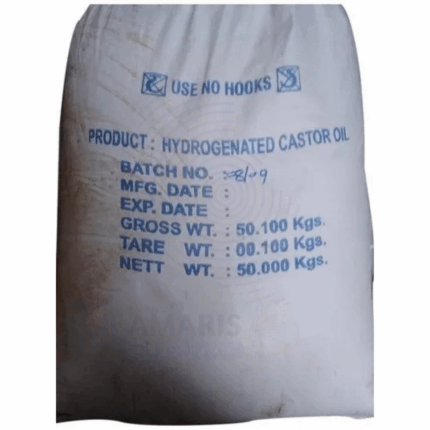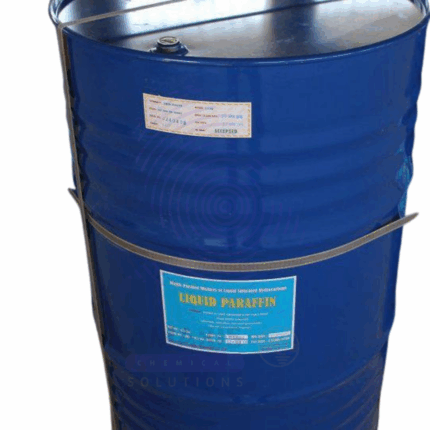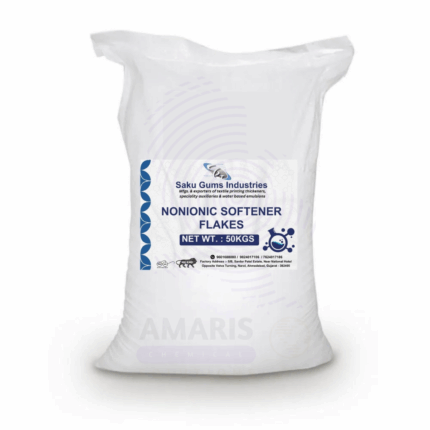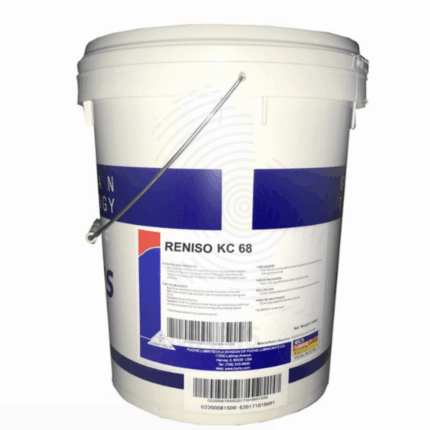Silicon Emulsion
Whatsapp Order
Silicon Emulsion is a stable, water-based emulsion of polydimethylsiloxane (PDMS) or other silicone fluids, commonly used for lubrication, gloss enhancement, release, water repellency, and surface conditioning. It appears as a milky-white, viscous liquid and is non-toxic, non-flammable, and easy to handle. Due to its excellent spreadability and low surface tension, it is widely used in industries ranging from automotive and textiles to agriculture, construction, and cosmetics.
Categories: Lubricants, Softening Agents
Tags: Non-Ionic Emulsion, Silicon Emulsion, Silicone Oil Emulsion, Water-Based Silicone
Description
Table of Contents
Toggle
Silicon Emulsion
Primary Uses
- Textile Industry
- Used as a softening agent for fabrics and yarns, imparting smoothness and a silky finish.
- Enhances wrinkle resistance and reduces static cling in synthetic fibers.
- Improves fabric lubrication during weaving and knitting processes.
- Automotive Industry
- Used as a dashboard and tire dressing for gloss enhancement and UV protection.
- Functions as a lubricant and protectant for rubber, vinyl, and plastic components.
- Used in car polishes and detailing sprays for shine and water resistance.
- Plastic & Rubber Processing
- Serves as a mold release agent in plastic and rubber molding operations.
- Provides surface gloss and anti-stick properties in rubber sheet manufacturing.
- Acts as a processing aid to improve flow and prevent material adhesion.
- Construction & Building Materials
- Used in concrete formwork as a release agent to prevent sticking and reduce surface defects.
- Provides water repellency in construction materials like bricks, tiles, and cementitious substrates.
- Used in coatings and sealants to enhance durability and water resistance.
- Personal Care & Cosmetics
- Included in hair care products for smoothness, detangling, and shine enhancement.
- Used in skin creams and lotions for conditioning and spreadability.
- Functions as a non-greasy emollient in sunscreens, serums, and shaving products.
- Furniture & Wood Polish
- Used in polishes for wood, leather, and synthetic furniture for shine and dust repellence.
- Protects surfaces from watermarks and minor abrasions.
Secondary Uses
- Agriculture
- Acts as a spray adjuvant to improve the spread and absorption of agrochemicals on plant surfaces.
- Used to reduce surface tension and improve pesticide efficacy.
- Paper & Packaging Industry
- Provides anti-blocking and anti-stick properties to packaging films and paper.
- Used in release coatings for label backings and adhesive tapes.
- Leather Processing
- Imparts softness, gloss, and water repellency to finished leather goods.
- Metalworking
- Used as a lubricant and anti-corrosion coating in light-duty metal forming operations.
- Printing Industry
- Applied as a release and anti-foaming agent in ink formulations and printing machinery.
- Household & Industrial Cleaning Products
- Added to surface cleaners and polishes for shine enhancement and protective coating.
KEY PRODUCT FEATURES
1. Basic Identification Attributes
- Chemical Name (IUPAC): Polydimethylsiloxane emulsion (composition may vary)
- Common/Trade Name: Silicon Emulsion
- CAS Number: Varies (e.g., 63148-62-9 for PDMS)
- HS Code: 3910.00.00
- Synonyms: Silicone fluid emulsion, PDMS emulsion, Silicone oil in water
2. Physical & Chemical Properties
- Physical State: Milky liquid emulsion
- Color & Odor: White or off-white; slight odor
- Solubility: Dispersible in water
- pH: Typically 6–8
- Viscosity: Varies (typically 100–1000 cSt based on formulation)
- Solid Content: Typically 20%–60% silicone
- Stability: Stable under normal temperature and storage conditions
3. Safety & Hazard Attributes
- GHS Classification: Not classified as hazardous (varies by formulation)
- Toxicity: Low; generally considered non-toxic and non-sensitizing
- Exposure Limits: No specific occupational exposure limits under normal use
- Inhalation of aerosols should be avoided
4. Storage & Handling Attributes
- Storage Conditions: Store in cool, dry conditions away from direct sunlight and freezing temperatures
- Container Type: Supplied in plastic drums, pails, or IBCs (typically 25kg, 50kg, 200kg)
- Shelf Life: Typically 6–12 months if stored properly
- Handling Precautions: Avoid contact with eyes; do not freeze; agitate gently before use
5. Regulatory & Compliance Attributes
- Complies with relevant industrial and cosmetic safety standards (e.g., REACH, RoHS, FDA-approved grades available for indirect food contact)
- May meet NSF standards for incidental food contact in some formulations
- Manufactured under ISO or GMP conditions depending on intended use
- VOC compliant where applicable in coatings and automotive uses
6. Environmental & Health Impact
- Biodegradability: Poor in natural environments (depends on silicone polymer type)
- Ecotoxicity: Generally low; avoid release into aquatic environments
- Bioaccumulation: Low potential
- Environmental Impact: Minimal when used and disposed of properly; non-ozone depleting
SAFETY HANDLING PRECAUTIONS
Safety Handling Precautions
- PPE Required: Safety goggles, gloves, and protective clothing recommended
- Handling Guidelines: Use in well-ventilated areas; avoid prolonged inhalation or contact with eyes
- Storage Measures: Keep containers tightly closed and stored in a dry environment
First Aid Measures
- Inhalation: Move to fresh air; seek medical advice if respiratory symptoms occur
- Skin Contact: Wash with soap and water; seek help if irritation develops
- Eye Contact: Rinse with clean water for 15 minutes; get medical attention if irritation persists
- Ingestion: Rinse mouth with water; do not induce vomiting; seek medical assistance
Firefighting Measures
- Fire Hazards: Generally non-flammable; may burn at high temperatures
- Extinguishing Media: Use water spray, foam, dry chemical, or CO₂
- Special Precautions: Use self-contained breathing apparatus if burning silicone residue is present
- Hazardous Combustion Products: Silicon oxides, carbon oxides, and formaldehyde (if overheated)
Related products
Hydrogenated Castor Oil
Hydrogenated Castor Oil, also known as castor wax, is a hard, brittle, and high-melting-point wax derived by the hydrogenation of pure castor oil. This white to off-white, odorless substance is non-toxic and insoluble in water but dispersible in surfactant systems. Its primary component is hydrogenated ricinoleic acid triglyceride, and it is prized for its excellent lubricating, emulsifying, thickening, and consistency-enhancing properties.
Due to its stability, non-reactivity, and film-forming capability, Hydrogenated Castor Oil is widely used in cosmetics, personal care, pharmaceuticals, industrial lubricants, coatings, plastics, and more. It improves product texture, enhances emulsion stability, and provides moisture retention in skincare applications.
Light White Mineral Oil Tech Grade
Light White Mineral Oil Tech Grade is a highly refined, colorless, odorless, and tasteless petroleum-derived oil. It is characterized by its low viscosity and excellent lubricating properties. This technical-grade mineral oil undergoes stringent purification processes to remove impurities, making it suitable for various industrial, cosmetic, pharmaceutical, and food-related applications. Its chemical stability, non-reactivity, and safety profile make it a versatile ingredient and lubricant in many manufacturing and processing sectors.
Liquid Paraffin
Liquid Paraffin, also known as mineral oil, is a clear, colorless, odorless, and tasteless petroleum-derived liquid hydrocarbon. It is composed primarily of saturated hydrocarbons and is highly refined to meet pharmaceutical and cosmetic grade standards. Liquid Paraffin is widely used for its lubricating, moisturizing, and protective properties. It is non-volatile, chemically stable, and insoluble in water, making it ideal for applications in personal care, pharmaceuticals, and industrial lubrication.
Non Ionic Softener
Non Ionic Softener is a type of textile softening agent formulated without ionic charges, making it compatible with a wide range of fabrics and detergents. It imparts a smooth, soft hand feel to textiles by reducing fiber stiffness and improving drape without causing fabric damage or yellowing. Due to its mild nature, Non-Ionic Softener is widely used in laundry, textile processing, and fabric finishing to enhance softness and reduce static cling.
Polyvinyl Chloride PE Wax
Polyvinyl Chloride PE Wax is a polyethylene-based wax additive used in PVC formulations to improve processing, lubrication, and surface finish. It serves as an internal and external lubricant in both rigid and flexible PVC products, enhancing extrusion, molding, and calendaring operations. It also contributes to better dispersion of fillers and pigments, reduced friction, and improved thermal stability. PE Wax for PVC is available in powder, flake, or granule form and is valued for its compatibility, thermal resistance, and cost-effectiveness.
Renisco KCS 68
Renisco KCS 68 is a clay-coated, controlled-release potassium sulfate fertilizer granule containing approximately 68% K₂O equivalent. The clay coating regulates potassium release, aligning nutrient availability with plant uptake over an extended period. This minimizes leaching and enhances nutrient-use efficiency. Renisco KCS 68 is widely used in horticulture, agriculture, turf management, and specialty crop production.
Titan Power 40 SAE
Titan Power 40 SAE is a high-performance monograde engine oil formulated for diesel and gasoline engines operating under moderate to severe conditions. Classified as SAE 40 by the Society of Automotive Engineers, this oil offers excellent thermal stability, wear protection, and oxidation resistance. It is particularly suited for older-generation engines and equipment in on-road, off-road, industrial, and marine environments where SAE 40 is specified. The formulation ensures reliable lubrication, engine cleanliness, and extended engine life.
Zinc Stearate
Zinc Stearate is a fine, white powder composed of zinc salts of stearic acid. It is a hydrophobic, non-toxic metal soap widely used as a lubricant, release agent, and stabilizer in plastics, rubber, paints, coatings, and personal care industries. Known for its excellent mold-release properties and compatibility with a range of polymers, Zinc Stearate offers thermal stability and processing efficiency across industrial applications.


 Preservatives(food)
Preservatives(food) Flavor Enhancers
Flavor Enhancers Acidulants
Acidulants Sweeteners
Sweeteners Antioxidants
Antioxidants Colorants(food)
Colorants(food) Nutraceutical Ingredients (food)
Nutraceutical Ingredients (food) Nutrient Supplements
Nutrient Supplements Emulsifiers
Emulsifiers
 Collectors
Collectors Dust Suppressants
Dust Suppressants Explosives and Blasting Agents
Explosives and Blasting Agents Flocculants and Coagulants
Flocculants and Coagulants Frothers
Frothers Leaching Agents
Leaching Agents pH Modifiers
pH Modifiers Precious Metal Extraction Agents
Precious Metal Extraction Agents
 Antioxidants(plastic)
Antioxidants(plastic) Colorants (Pigments, Dyes)
Colorants (Pigments, Dyes) Fillers and Reinforcements
Fillers and Reinforcements Flame Retardants
Flame Retardants Monomers
Monomers Plasticizers
Plasticizers Polymerization Initiators
Polymerization Initiators Stabilizers (UV, Heat)
Stabilizers (UV, Heat)
 Antifoaming Agents
Antifoaming Agents Chelating Agents
Chelating Agents Coagulants and Flocculants
Coagulants and Flocculants Corrosion Inhibitors
Corrosion Inhibitors Disinfectants and Biocides
Disinfectants and Biocides Oxidizing Agents
Oxidizing Agents pH Adjusters
pH Adjusters Scale Inhibitors( water)
Scale Inhibitors( water)
 Antioxidants(cosmetic)
Antioxidants(cosmetic) Emollients
Emollients Fragrances and Essential Oils
Fragrances and Essential Oils Humectants
Humectants Preservatives
Preservatives Surfactants(cosmetic)
Surfactants(cosmetic) Thickeners
Thickeners UV Filters
UV Filters
 Fertilizers
Fertilizers Soil Conditioners
Soil Conditioners Plant Growth Regulators
Plant Growth Regulators Animal Feed Additives
Animal Feed Additives Biostimulants
Biostimulants Pesticides (Herbicides, Insecticides, Fungicides)
Pesticides (Herbicides, Insecticides, Fungicides)
 Active Pharmaceutical Ingredients (APIs)
Active Pharmaceutical Ingredients (APIs) Excipients
Excipients Solvents(pharmaceutical)
Solvents(pharmaceutical) Antibiotics
Antibiotics Antiseptics and Disinfectants
Antiseptics and Disinfectants Vaccine Adjuvants
Vaccine Adjuvants Nutraceutical Ingredients (pharmaceutical)
Nutraceutical Ingredients (pharmaceutical) Analgesics & Antipyretics
Analgesics & Antipyretics
 Analytical Reagents
Analytical Reagents Solvents(lab)
Solvents(lab) Chromatography Chemicals
Chromatography Chemicals Spectroscopy Reagents
Spectroscopy Reagents microbiology-and-cell-culture-reagents
microbiology-and-cell-culture-reagents Molecular Biology Reagents
Molecular Biology Reagents Biochemical Reagents
Biochemical Reagents Inorganic and Organic Standards
Inorganic and Organic Standards Laboratory Safety Chemicals
Laboratory Safety Chemicals Specialty Laboratory Chemicals(Special Laboratory Equipment)
Specialty Laboratory Chemicals(Special Laboratory Equipment)
 Demulsifiers
Demulsifiers Hydraulic Fracturing Fluids
Hydraulic Fracturing Fluids Scale Inhibitors(oil)
Scale Inhibitors(oil) Surfactants(oil)
Surfactants(oil) Drilling Fluids
Drilling Fluids
 Dyes and Pigments
Dyes and Pigments Bleaching Agents
Bleaching Agents Softening Agents
Softening Agents Finishing Agents
Finishing Agents Antistatic Agents
Antistatic Agents
 Admixtures
Admixtures Waterproofing Agents
Waterproofing Agents Sealants and Adhesives
Sealants and Adhesives Curing Compounds
Curing Compounds Concrete Repair Chemicals
Concrete Repair Chemicals Anti-Corrosion Coatings
Anti-Corrosion Coatings
 Surfactants(cleaning)
Surfactants(cleaning) Builders
Builders Enzymes
Enzymes Solvents (Cleaning)
Solvents (Cleaning) Fragrances
Fragrances
 Electronic Chemicals
Electronic Chemicals Catalysts
Catalysts Lubricants
Lubricants Photographic Chemicals
Photographic Chemicals Refrigerants
Refrigerants Automotive chemicals
Automotive chemicals Pyrotechnic Chemicals
Pyrotechnic Chemicals
 Biodegradable Surfactants
Biodegradable Surfactants Bio-based Solvents
Bio-based Solvents Renewable Polymers
Renewable Polymers Carbon Capture Chemicals
Carbon Capture Chemicals Wastewater Treatment Chemicals
Wastewater Treatment Chemicals
 Pigments
Pigments Solvents(paint)
Solvents(paint) Specialty Coatings
Specialty Coatings Binders/Resins
Binders/Resins Additives
Additives Driers
Driers Anti-Corrosion Agents
Anti-Corrosion Agents Functional Coatings
Functional Coatings Application-Specific Coatings
Application-Specific Coatings
 Fresh Herbs
Fresh Herbs Ground Spices
Ground Spices Whole Spices
Whole Spices Spice Blends
Spice Blends Dried Herbs
Dried Herbs
 Leavening Agents
Leavening Agents Dough Conditioners
Dough Conditioners Flour Treatments
Flour Treatments Fat Replacers
Fat Replacers Decoratives
Decoratives Preservatives(baking)
Preservatives(baking)
 Plasticizers & Softeners
Plasticizers & Softeners Reinforcing Agents
Reinforcing Agents Adhesion Promoters
Adhesion Promoters Vulcanizing Agents
Vulcanizing Agents Antidegradants
Antidegradants Blowing Agents
Blowing Agents Fillers & Extenders
Fillers & Extenders Accelerators & Retarders
Accelerators & Retarders























